

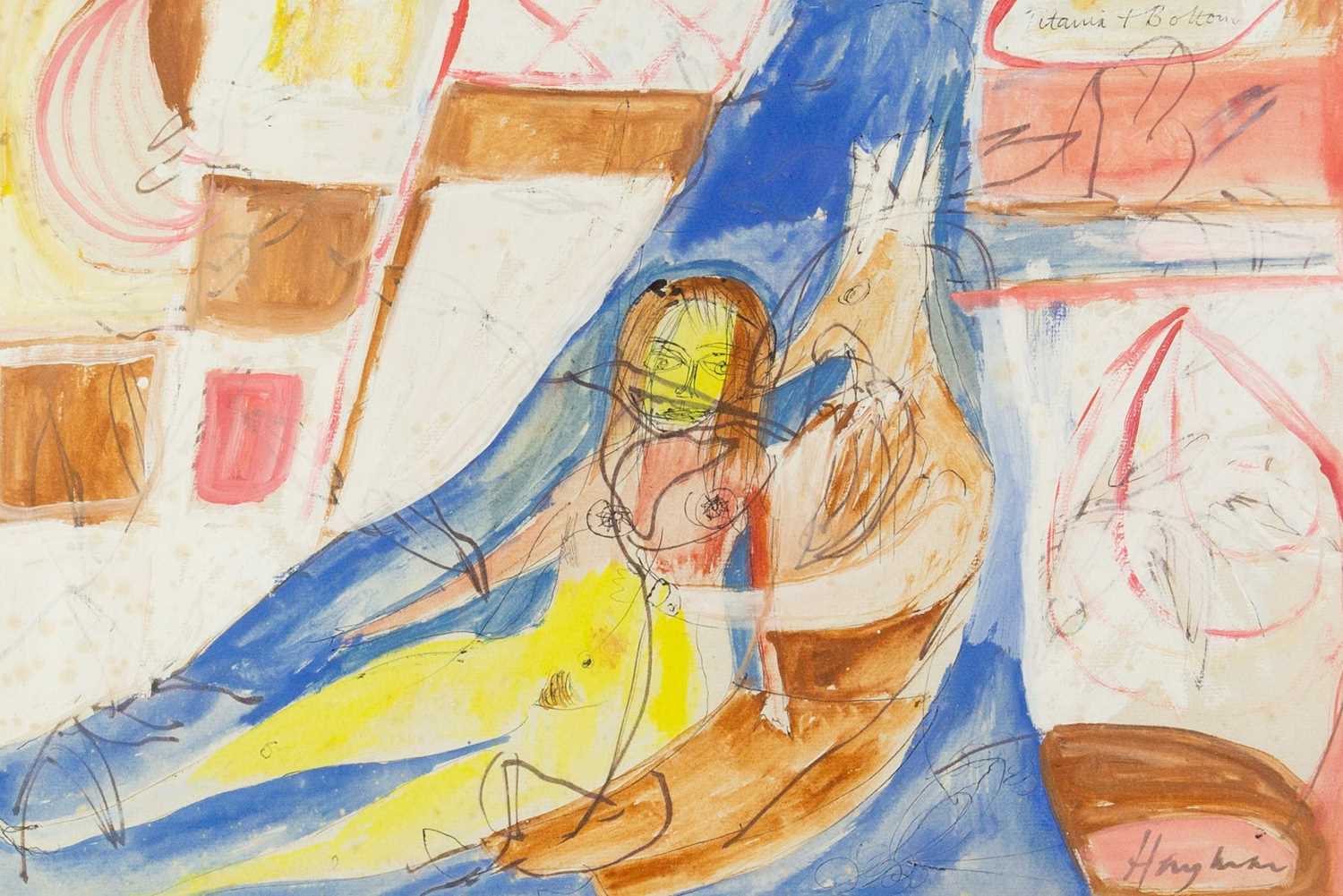
Titania and Bottom Embracing, 1964
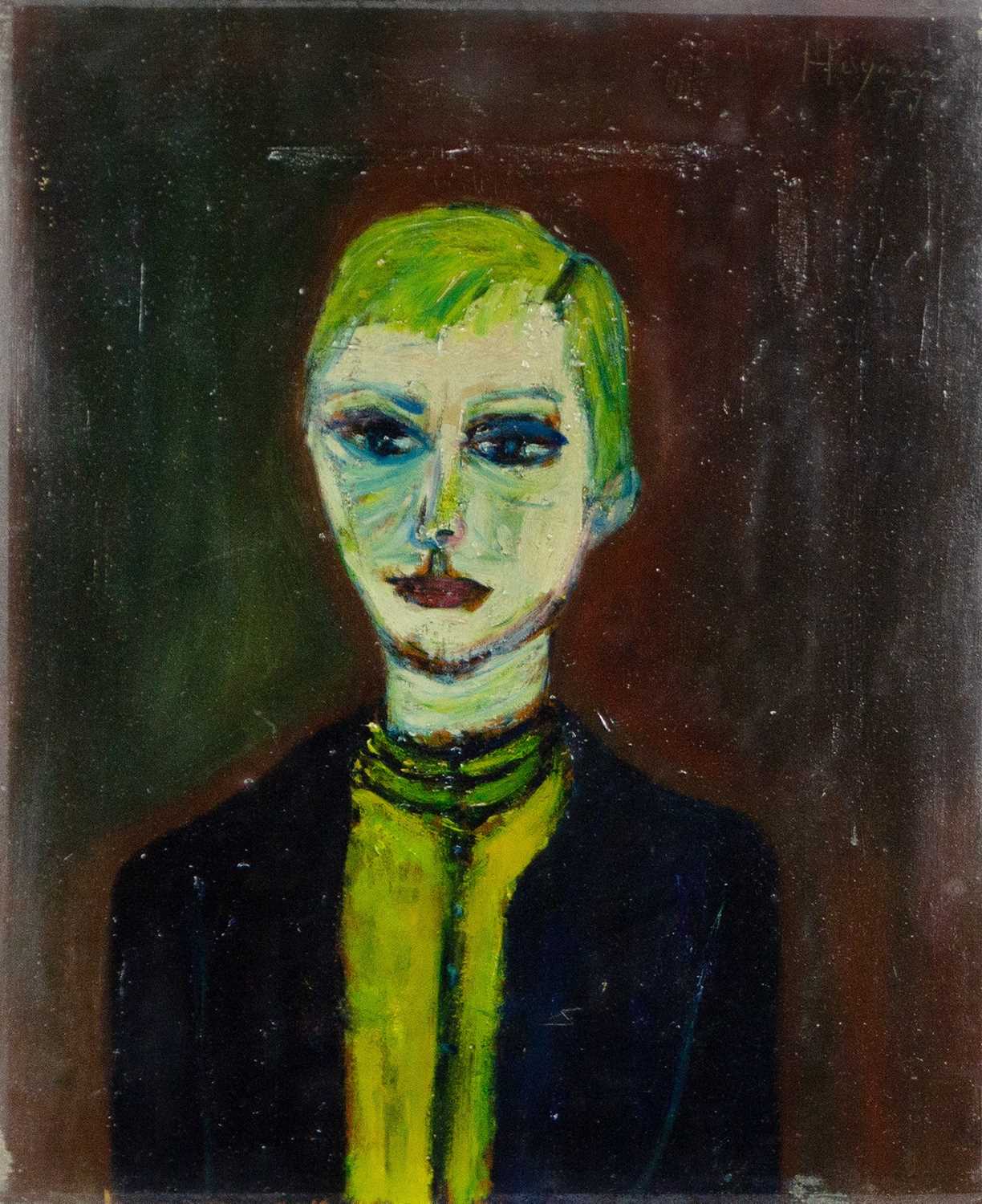
Portrait of the Artist's Wife, 1957
We are indebted to the art critics, Philip Vann and Mel Gooding, who have both written extensively on Hayman; excerpts of which are reproduced here:
Artists who navigate among the fjords of the mind and dare set sail to the wide ocean are rare. Patrick Hayman was such an artist, the full range of whose gifts will take a long time to be charted. His paintings, drawings, constructions and poems are not very widely known, but he attracted a dedicated and growing following among certain painters, curators, critics and members of the public - Philip Vann.
He touched nothing that did not undergo a sea change into something rich and strange. Hayman’s distinctive imagery was utterly his own, and yet it seemed to touch upon something deep in the spirit of those who encountered it. He was much admired as an artist by many of his most distinguished creative and critical contemporaries; Barbara Hepworth, Ben Nicholson, Peter Lanyon, Alan Bowness and JP Hodin among them - Mel Gooding.
They sensed in his work a rare pitch of feeling and thought, expressed through means at once easy, skilful, painterly and unselfconscious. He was a visionary artist who worked mostly on a small, intimate scale, with an instinctive grace and quizzical humour masking his quite devastating insights. He wrote, 'One cannot look directly at the sun; an oblique approach is necessary." He was a man of unusually wide human sympathies and tireless intellectual curiosity, the fruits of which - appearing in his art as in his alert, witty, endlessly cross-referenced conversation - were never divorced from his most real feelings - Philip Vann.
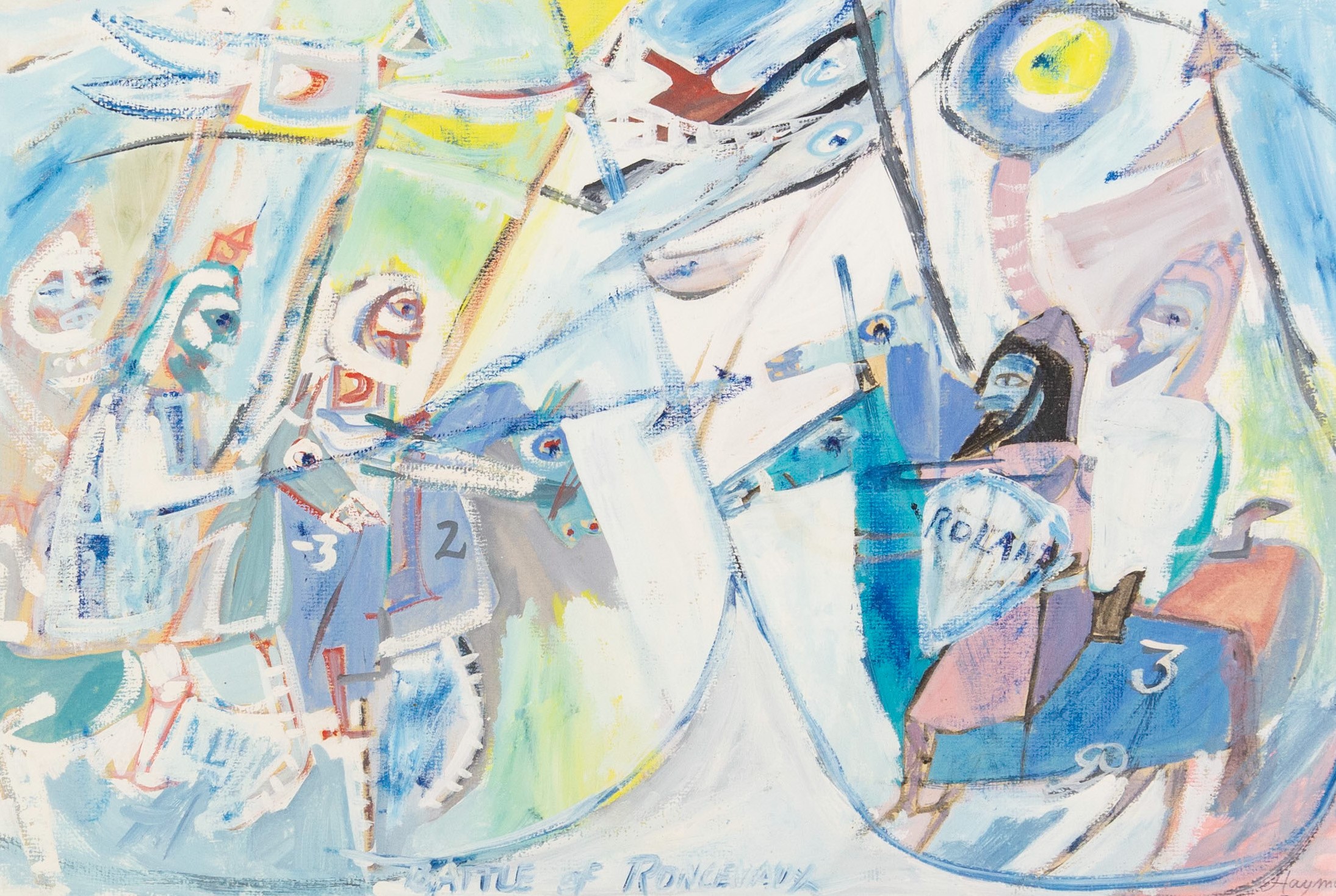
Roland and the Battle of Roncevaux, 1965
Hayman's world was intensely private. He single-mindedly pursued a personal mythology through numerous small paintings, drawings, constructions and poetry, sometimes painstakingly reworking them over a number of years.
Born in London in 1915, Hayman spent his formative years in New Zealand, where he was closely involved with several of the most important young artists of a brilliant group associated with Colin McCahon. He returned to England in 1947 and, before long, became part of the burgeoning post-war art scene in Cornwall. At first as a resident, and thereafter as an annual visitor. St. Ives provided a challenging and supportive artists' community for Hayman.
About 1952, Barbara Hepworth wrote to him:
'There are so many of your paintings which I should love to have ... Both the colour and calligraphy (as well as the whole poetic idea) mean a lot to me'. Peter Lanyon wrote in 1954 that 'I admire Pat's courage' and that he believed 'his work will prove to be embracing... the most secret moments of our being'.
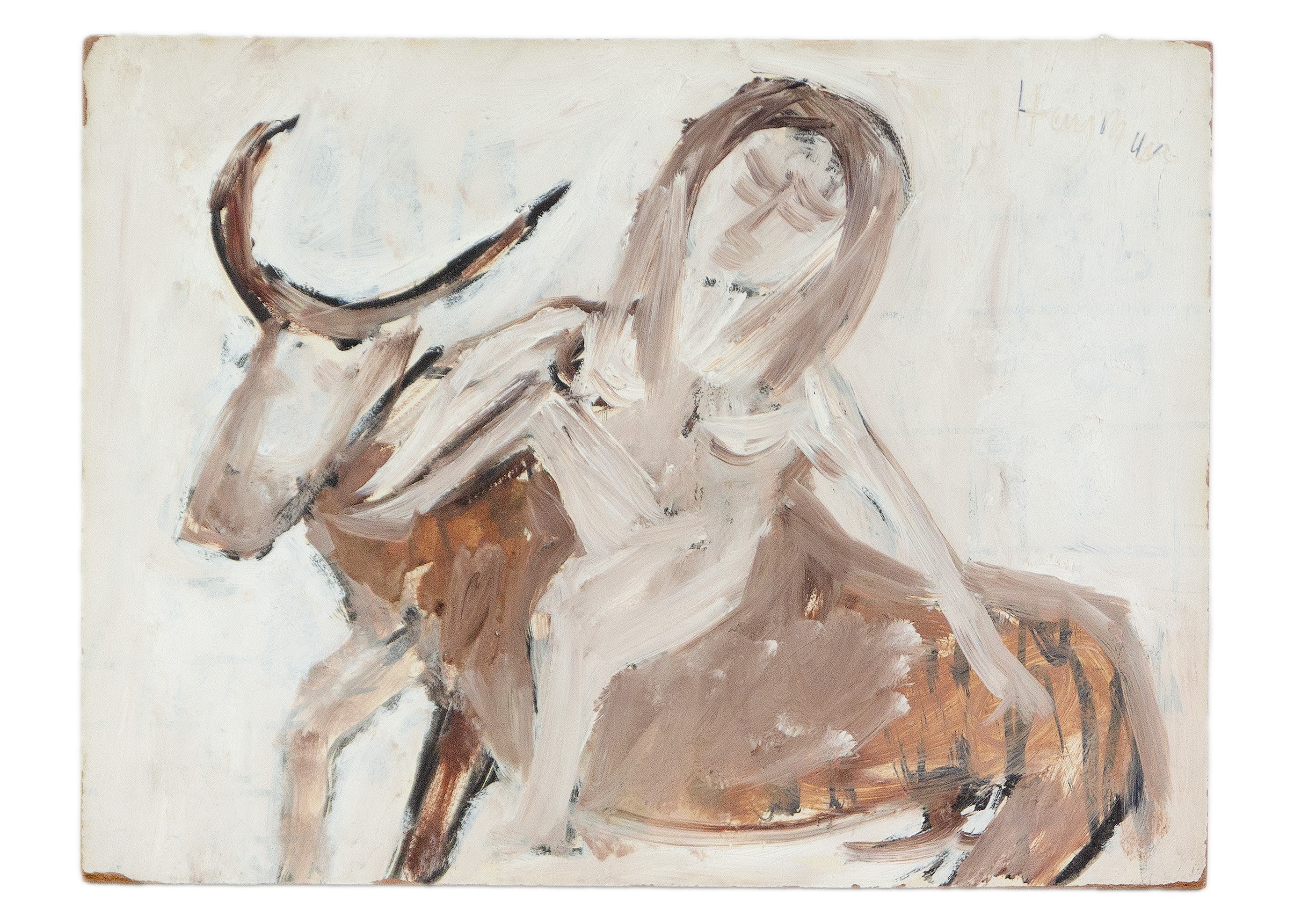
Lady Godiva, 1960
Although he finally moved from Cornwall, back to London permanently, he often returned there, and it remained an inspiration for his painting. He much admired the work of the primitive artist Alfred Wallis; his own pictures also drew on images of the sea and have an apparently childlike quality, vigorous, vivid and direct.
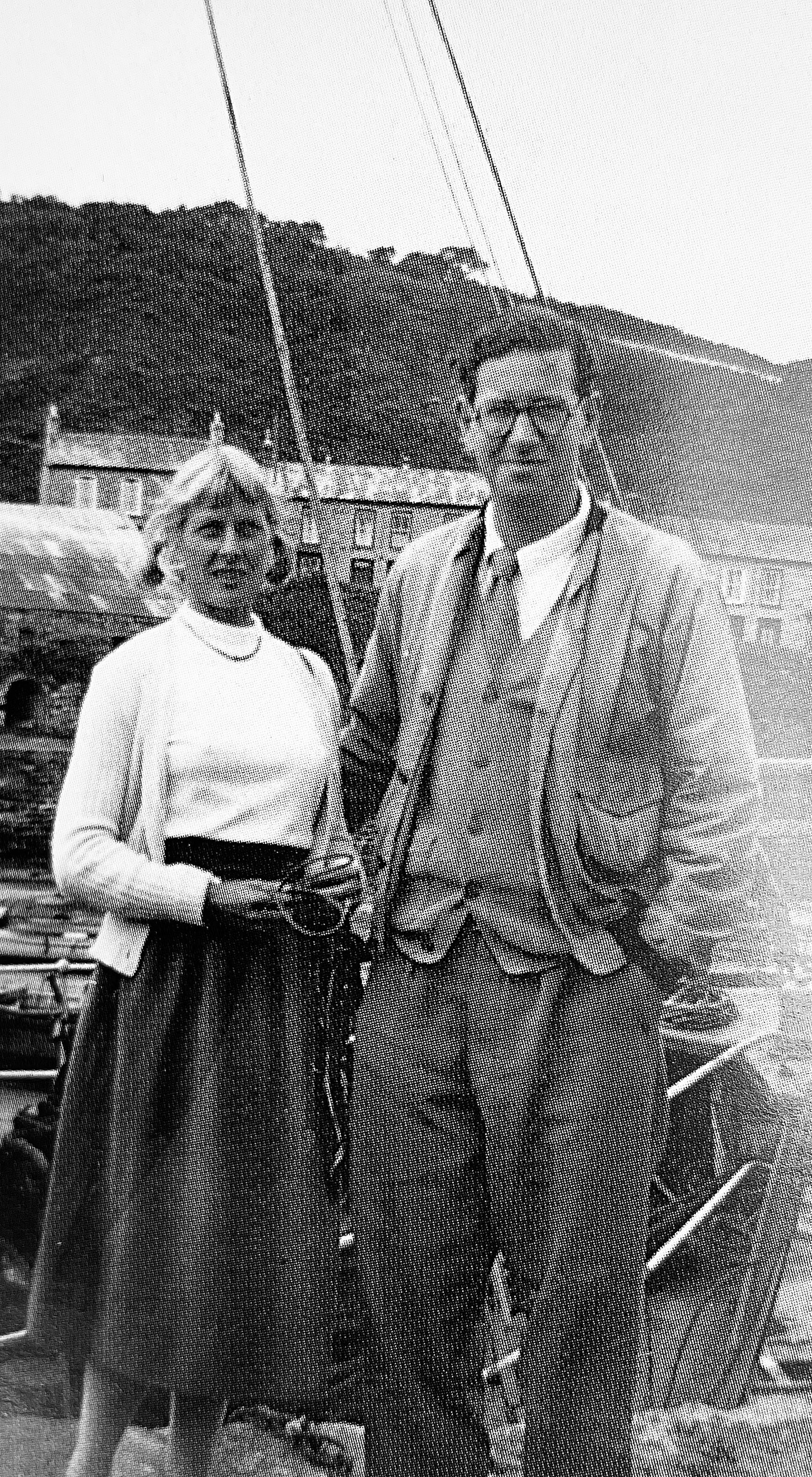
Patrick with his wife Barbara, in Cornwall, early 1950s
From 1958–63, Hayman founded and edited the magazine The Painter and Sculptor, which was influential in its advocacy of figurative art:
Excerpt from Winter 59/60 Vol 2 no. 4
I wanted to paint, and I did paint. I imagine every painter would say this.
The thing most wanted comes about in being. And so out of the fragments of his life, the artist constructs his universe, which is a world of possibilities, a legend, a small enclosed world that reaches out in the direction of great powers.
In this reaching out, the painter creates symbols for himself, images and universal dreams. But paintings are ambiguous creations which may have many meanings. If I paint a blind man with a stick, or a child with a hoop, or a mother with a child, their real meaning may be in tension with the surface meaning. Gaiety of colour and ambiguity of shape may belie a surface sadness. The conventions are dispelled by fierce powers hidden below the surface of everyday life.
In short, painting has no words but colour and form, a quality of praise, of affirmation. Its past is one with its future, it is painted in the present.
Patrick Hayman
Hayman’s work is represented in a number of public collections, including the Tate Gallery, Arts Council Collection, Ben Uri Museum of Art, National Art Gallery of New Zealand, Wellington, National Gallery of South Australia, Caloute Gulbenkian Foundation, Lisbon, Art Gallery of Ontario, Toronto, Canada, Contemporary Art Society, London.
View the Auction Catalogue (coming soon) & register to bid online
The news, history and stories behind our art and antiques